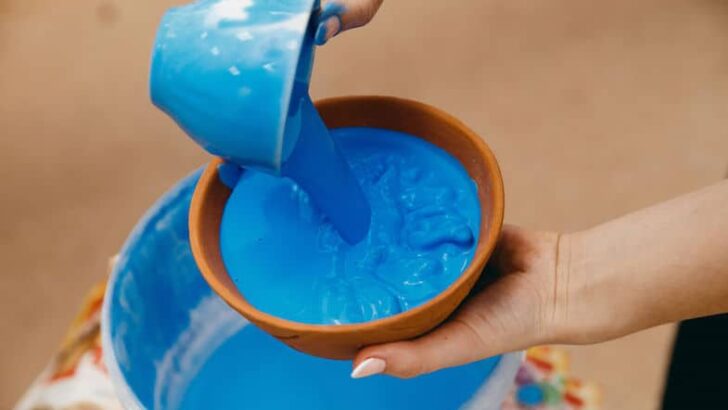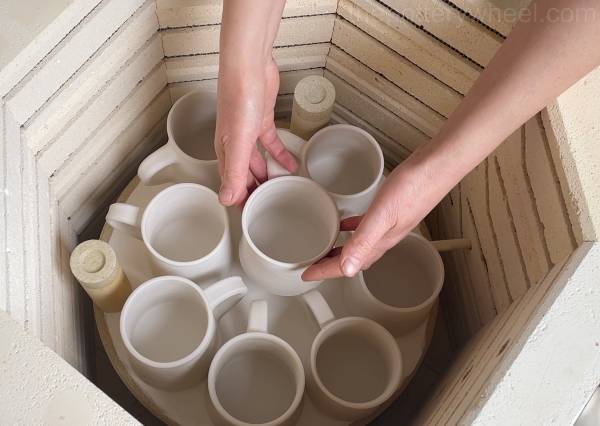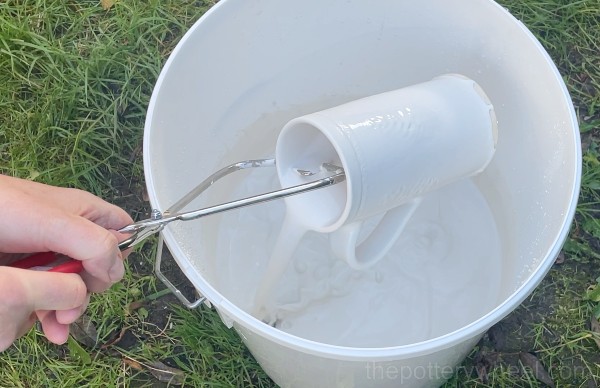Your cart is currently empty!
Do You Have to Bisque Fire Pottery? Some Single Firing Tips
Published:
Last Updated:

Affiliate Disclaimer
As an affiliate, we may earn a commission from qualifying purchases. We get commissions for purchases made through links on this website from Amazon and other third parties.
Usually, pottery is fired two times. The first firing is the bisque fire, where the clay is turned into ceramic. The second firing is the glaze fire, where the pottery is glazed. But do you have to bisque fire pottery? Or can you skip the bisque firing stage?
No, you don’t always have to bisque fire pottery. The two-step firing process is more common, but you can apply glaze to greenware and skip the bisque firing stage. This is called single firing or raw glazing.
However, single-firing pottery is more risky in a few ways. So, read on to pick up some tips and increase your chances of a successful firing.
What is Bisque Firing?
When we bisque fire, bone-dry clay pots are loaded into the kiln and fired for the first time. With a bisque fire, the pots are unglazed, although they may have been decorated with clay slip or underglaze.

Historically, pottery wasn’t always fired twice. Originally single firing was the norm. However, at different points in history, and in different countries, bisque firing has been adopted for a range of reasons.
For example, around 900AD the Persians were trying to create pottery that looked like Chinese porcelain. However, they were using low-fire earthenware clay that was not white like porcelain.
They found they could recreate the look of porcelain using a white tin glaze. And they discovered that tin glaze worked best on bisque-fired pottery (source). You can read more about the fascinating development of tin glazing here.
Why do We Bisque Fire Pottery?
During a bisque fire, the clay undergoes important chemical and physical changes. Leftover moisture evaporates from the clay. Water that is bonded to the clay at a chemical level is driven out. And organic materials in the clay body burn away.
In addition to this, the surface of the clay particles starts to adhere to one another. The clay particles move closer to one another and the clay becomes harder and denser. This process is called ‘sintering’, and at this point, the clay becomes ceramic material.
Before a bisque fire bone-dry clay can easily be rehydrated and made workable again. After the bisque fire, you can’t rehydrate clay and it can’t be returned to its pliable state. Ceramic bisque clay is porous but insoluble.
The Benefits of Bisque Firing Pottery
Bisque pottery is harder and more durable than bone dry clay. As a result, it’s less likely to be broken when it’s being handled.
This is one of the reasons that bisque firing has become common practice. From a business point of view, pottery manufacturers found that they lost fewer pieces from breakage when they bisque fired their pottery once the clay had dried.
Also, the porous quality of bisque fired clay makes it perfect for glazing, because it absorbs liquid well. Glaze sticks to the bisque surface because the porous ceramic absorbs the water in the glaze. The materials suspended in the water are left behind on the pottery surface in an even, dry layer.

Usually, the glazed ceramic is then fired a second time. The second firing is also known as the glaze fire or ‘glost’ fire. During this firing, the glaze melts and forms a glass layer over the surface of the pottery. The glaze is decorative, but it also makes the pottery waterproof.
An added benefit of bisque firing is that during the first firing, moisture, gases, and carbonaceous material are burned out of the clay. If the bisque firing stage is skipped, the fumes and gases have to pass through the glaze during the glaze fire. This can sometimes create imperfections and defects in the pottery glaze.
With all that said, you may well be wondering if you do have to bisque fire pottery. So, let’s take a look at that now…
Do You Have to Bisque Fire Before Glazing?
As mentioned a little earlier an alternative approach to bisque firing is single firing. This is also known as raw glazing because you are applying glaze to raw clay. Glaze is applied to greenware pottery and the pieces are fired only once.
One of the benefits of raw glazing is that it removes the need for the bisque fire, which takes time and costs money. It also eliminates a bit of a boring step from the pottery process. Unloading a kiln of bisque pottery is not the most exciting part of making pottery.
Potters who like to raw glaze often say that it makes the process of glazing more lively and immediate. Whereas glazing bisqueware can feel to them like a chore.
However, there are some risks attached to glazing greenware. The glaze you use can make all the difference.
Raw Glazing Single Fired Pottery
Certain types of glazes work better with raw glazing than others. Glazes with a high clay content work better.
Raw glazing is similar to the underglaze process, in the sense that glaze is applied to the clay prior to firing. Most underglaze can be applied to clay at any greenware stage, either before or after bisque firing.
Potters that make their own glazes can make adjustments to the glaze recipe to increase the clay content in the glaze. This can make the glaze more suitable for single firing.
Shiny glazes are often not ideal for single firing because they have a lower clay content. You will probably have better results with matte or semi-gloss glazes.
Methods of Raw Glazing
There are different ways of applying glaze to greenware. Some potters like to glaze the inside of their pottery when it’s leather-hard. They then wait until the outside of the pot is bone dry before glazing the outer surface.
Applying the glaze in two stages like this can prevent the greenware from absorbing too much water at once and losing its shape. Nevertheless, glaze can be applied to the greenware all over at one time if you prefer.
You can apply glaze to greenware in the same way that you would bisqueware. So, it can be poured, sprayed, brushed, or dipped. But it’s a good idea to keep the amount of water the greenware absorbs to a minimum.
Spraying glaze onto greenware is a good technique, because it introduces the smallest amount of water to the pottery surface. Adding Gum Arabic to the glaze can help it to stick to the surface of the greenware (source).
When you are applying glaze to greenware, there is a risk that the glaze might flake off or crack as it dries. Also, as gas bubbles and fumes escape from the clay during firing, this can cause blemishes on the glaze surface. So, finding a good clay and glaze combination may take a little trial and error.
Tips for Single Firing
Here are some measures you can take to increase the chance of successfully single firing your pottery.
- Glaze with a high clay content usually works best for single firing
- Be cautious if you apply glaze all over your pottery at one time as the water content in the glaze can soften the clay and affect the shape of your pottery.
- Be prepared to experiment with your glazes.
- Make sure your glazed greenware is bone dry before firing. Putting wet pottery into the kiln increases the chances that it will crack or explode during firing.
- Increase the temperature in your kiln slowly. Ramping up the temperature slowly allows moisture and gases to escape at a slower rate. This reduces the chance of glaze defects.
- Fire your pottery on a longer slower schedule than a normal glaze fire.
- As usual, let the pottery cool before removing it from the kiln.
Final Thoughts
There is a higher chance that single fired pottery will have glaze defects. But my experience has been that there are no guarantees when you glaze pottery, whether or not you are bisque firing!
Even if you are firing your pottery in two stages, it can take time and experimentation to get the right clay glaze combination. And you also need to find the right firing schedule to bring the best out in your glazes.
From that point of view, single firing is no different. It requires patience, experimentation, and testing. So, in answer to the question do you have to bisque fire pottery, the answer is no, you don’t. But you will need to experiment and find the right glazes for your clay, and be patient with yourself as you work out the right firing schedule too



